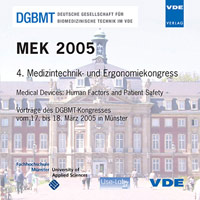Sweden: Patient Monitoring Systems and Anaesthesia Workstations
Konferenz: MEK 2005 - 4. Medizintechnik- und Ergonometriekongress - Vorträge des DGBMT-Kongresses: Medical Devices: Human Factors and Patient Safety
17.03.2005 - 18.03.2005 in Münster, Deutschland
Tagungsband: MEK 2005
Seiten: 5Sprache: EnglischTyp: PDF
Persönliche VDE-Mitglieder erhalten auf diesen Artikel 10% Rabatt
Autoren:
Liljegren, Erik (Erik Liljegren, Department of Product and Production Development, Chalmers University of Technology, Göteborg, Sweden)
Inhalt:
Healthcare today often relies on complex technical equipment. This increases the importance of usability as a criterion when hospitals select and purchase new equipment. The purpose of this paper is to describe the experiences from two purchases of technical equipment at a major Swedish university hospital. Cognitive walkthrough and usability tests were used to evaluate the usability of three patient monitoring systems and hierarchical task analysis was used to evaluate the usability of four anaesthesia workstations. It was possible to use the results from the usability evaluation to grade the usability of the tested devices. The methods provided relevant and usable information that was used and influenced the decision about what system to purchase. A conclusion from this work is that cognitive engineering methods are useful and suitable for evaluating the usability of medical equipment in a clinical environment. Cognitive walkthrough is a suitable method to evaluate medical devices with menu systems. Usability tests are useful for evaluating handling characteristics but should be performed after the clinical trial, which means that the clinical trial needs to be extended in time. Hierarchical task analysis is a suitable method for describing task content for comparison.


